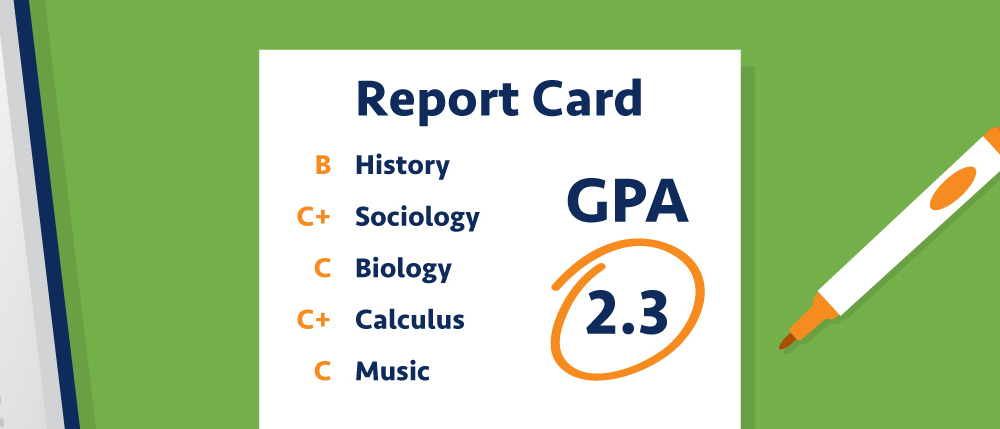The full form of GPA is Grade Point Average. GPA corresponds to an education grading system used to measure student’s academic performance in college and school. It is a numerical score that provides a clear summary of the main aspects of the academic achievement or reflection of the student in an academic year.

Importance of GPA
GPA is more than just a number; it’s a reflection of academic achievement. It impacts college admissions, scholarships, and job opportunities. It motivates personal growth, hones skills like discipline and time management, and helps strike a balance between academic success and overall well-being. GPA is a vital part of your academic journey and a stepping stone to future aspirations.
- Many organisations have used GPA for the accuracy of being eligible and appropriate for the career of a candidate.
- In the interview, these organisations often find separating the GPA in academics from results for selection processes.
- GPA can not calculate a candidate’s success. It can be used to determine the evaluation & performance of the applicant.
- Recent analyses and research on GPA found no correlation between the performance of an employee and their GPA.
How to Calculate Your GPA
- There are various online GPA calculators that can help students figure out their GPA. Some calculators allow students to type in the grades they have already earned and will calculate the GPA for them.
- There are also calculators that will allow students to calculate their projected GPA for the current semester or upcoming semesters. These calculators can be helpful in seeing if students are on track to reach their desired GPA.
How does GPA work?
The grade point average is the cumulative average of the grades that a student earns in all courses. Grade points are determined by multiplying the point value of a letter grade by the number of credit hours for the course.
For example, if a student has a B in a three-credit-hour course, the grade point would be three (B multiplied by the point value assigned to a B).
Grade points are also awarded for grades of A, A-, B+, B, C+, C, D+, and D.
No grade points are given for an F, I, or WF.
Grade point average is not figured on pass/fail courses.
Convert GPA into Percentage
How to Convert GPA into Percentage: A Quick Guide
- Know Your Grading Scale: Understand your school’s grading scale, as it may differ from place to place.
- Look for Conversion Guidelines: Check if your institution provides a GPA to percentage conversion scale. If not, a general rule is that a GPA of 4.0 equals 100%.
- Perform the Calculation: Use this simple formula to convert: Percentage = GPA x 25
For instance, if your GPA is 3.5, the calculation would be:
Percentage = 3.5 x 25 = 87.5%
This quick guide helps you translate your GPA into a percentage, making it easier to compare academic performance in different systems. Always consult your school or advisor for specific conversion details if needed.
Benefits of GPA
- The education grading method has reduced the learner’s ranking burden, allowing them to learn without stress.
- The category of education grading is based on an advanced classification system.
- The education rankings system helps the learners identify their strengths and weaknesses.
- The grading standard for education has made studies simpler and more evident in many aspects.
Conclusion
In the educational landscape, GPA (Grade Point Average) serves as a vital indicator of academic performance. It encapsulates the effort, dedication, and accomplishments of students, offering insights into their scholastic journey. Through this lens, we’ve explored the multifaceted world of GPA.
GPA acts as a universal language, allowing institutions, employers, and individuals to gauge and compare educational achievements. It plays pivotal roles in college admissions, scholarship opportunities, and even career prospects, reflecting a student’s commitment to excellence.
FAQs About GPA
GPA stands for Grade Point Average. It’s a numerical representation of your academic performance, typically on a scale of 0 to 4.0, that reflects your average grade in courses.
GPA is calculated by assigning grade point values to your letter grades (e.g., A = 4.0, B = 3.0) and then averaging them based on the credit hours of each course.
A good GPA varies depending on your goals. Generally, a GPA above 3.0 is considered good, while 3.5 or higher is excellent for many purposes like college admissions or scholarships.
GPA is a crucial factor in college admissions. Higher GPAs increase your chances of getting accepted into colleges and universities.
Related posts:
- AMC Full Form: Benefits, Components, Needs, Advantage
- ORS Full Form: Dehydration, Myths, Flavors, Varieties & Facts
- PCC Full Form: Importance, Types, Application Process
- PAN Full Form: Legal Provisions, Regulations,
- BRB Full Form: Productive, Routine, Distractions
- MCD Full From: Introduction, Responsibility, Challenges
- CT Scan Full Form: Scans, price, Advantages
- USA Full Form: History, Economics,Technology, culture




















